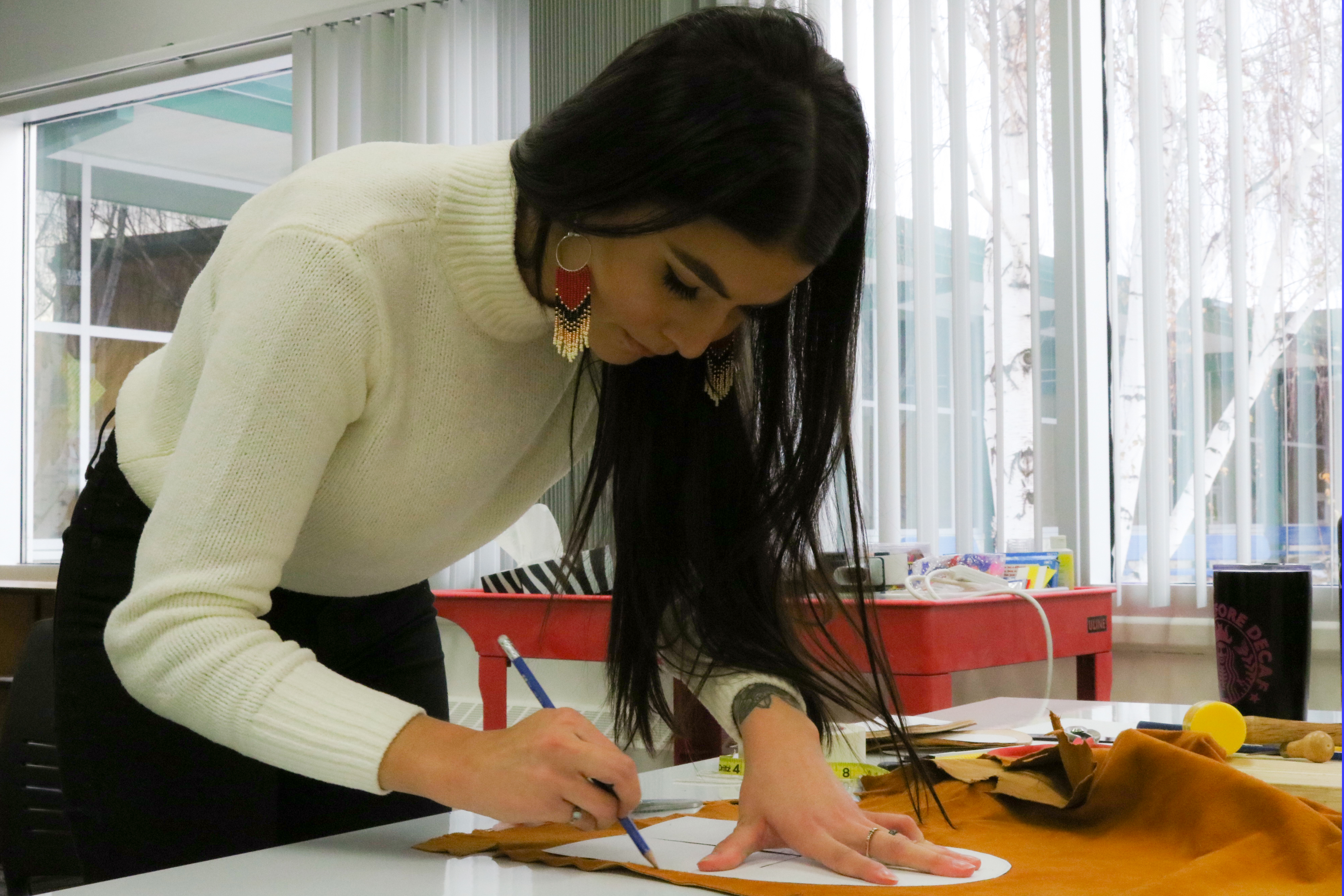Focus and precision filled the minds of students while they created unique indigenous footwear at Lethbridge College. This was a part of the celebration festivities to kick off one of the world’s largest online indigenous celebrations in Canada.
Rock Your Mocs is a non-profit organization created in 2011, as a worldwide Indigenous Peoples social media event.
According to the Rock Your Moc Facebook page, the online initiative was created for Indigenous people to stand united through tribal individuality while wearing and creating moccasins and honouring ancestors and indigenous peoples worldwide.
Once the online community grew, people began to plan their own special activities for the occasion. Over 25,000 people have participated since it began in 2011.
Lethbridge College became involved by offering a moccasin-making workshop on Oct. 29 and 30. This gave students the opportunity to experience hands-on learning while making the significant symbol of indigenous culture.
According to Follow the Moccasin, moccasins are a symbol of protection and acceptable.
Lowell Yellowhorn, Indigenous student support coordinator, said he enjoys that Lethbridge College offers these opportunities for people to gain confidence within the indigenous culture.
“Moccasins are a fashion icon in the non-indigenous world so, it’s being able to link our students with a cultural skill that they’ll carry with them the rest of their lives,” he said.
Yellowhorn said these types of events give students a sense of belonging and pride about their culture.
Sloan MacDonald, a nursing education in southwestern Alberta (NESA) student, said she is grateful to be able to have these opportunities for her to learn more about her background.
“The best part is being able to become a part of the culture and pass on the culture,” she said.
MacDonald mentioned her grandmother had passed away before she was able to learn her family’s indigenous teachings. She said she is grateful to learn from others around her.
The moccasin-making workshop allowed every student to stitch their own way into the indigenous culture. The process included measuring their feet, cutting out the soles, stitching the materials together and beading them uniquely.
Both sessions of the workshop had full registration.

